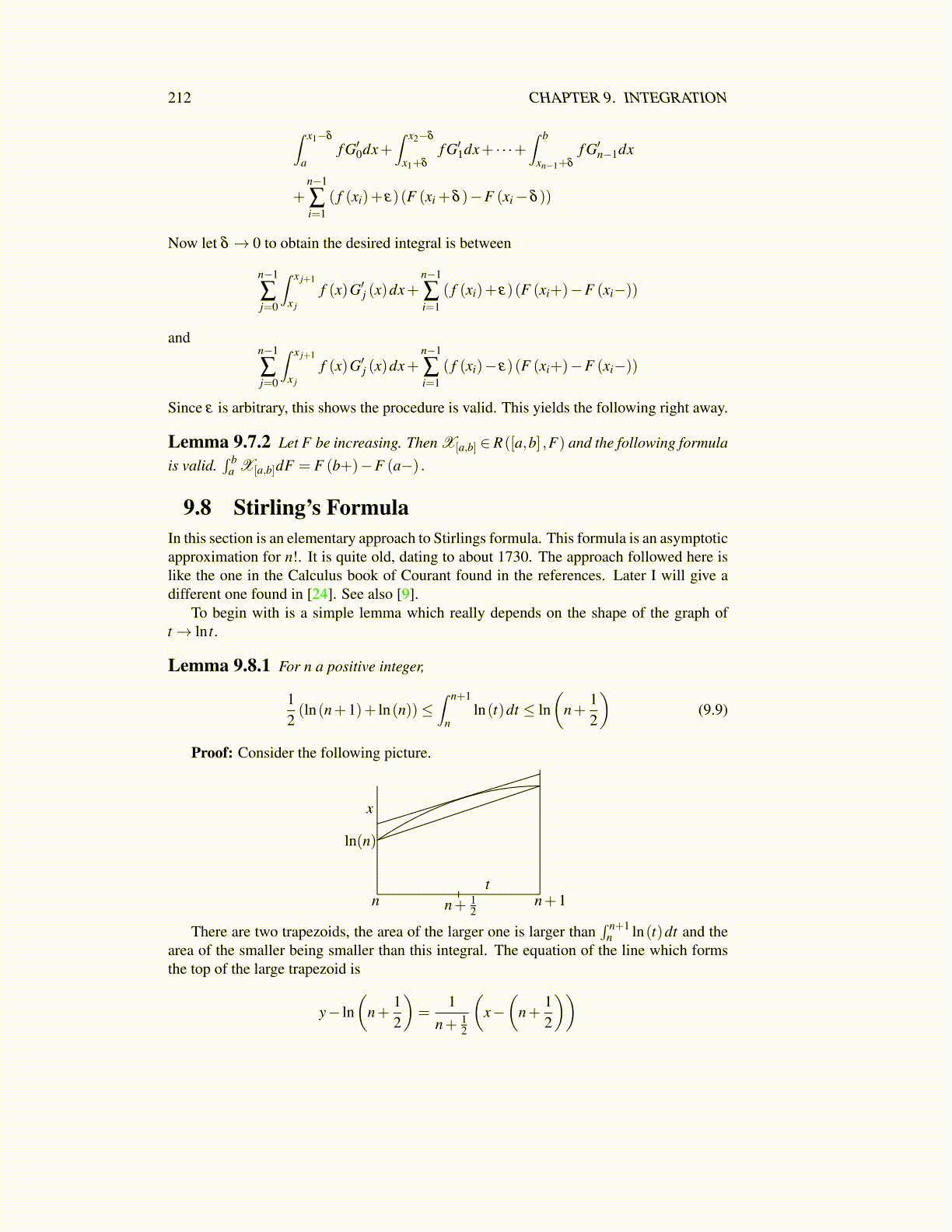
212 CHAPTER 9. INTEGRATION
We know that sin(x)∈ [0,1] for x∈ [0,π/2] and so sin2m+1 (x)≥ sin2m+2 (x) . Thereforefrom 9.10,
m+1m
=2m+2
2m≥ 2m+2
2m
∫ π/20 sin2m+2 (x)dx∫ π/20 sin2m+1 (x)dx
=
∫ π/20 sin2m (x)dx∫ π/2
0 sin2m+1 (x)dx
=
(2m−1)(2m−3)···12m(2m−2)···2(2m)(2m−2)···2
(2m+1)(2m−1)···3
π
2=
π
2(2m+1)
(2m−1)2 (2m−3)2 · · ·122m (m!)2 ≥ 1
It follows from the squeezing theorem that
limm→∞
12m+1
22m (m!)2
(2m−1)2 (2m−3)2 · · ·1=
π
2
This exceedingly interesting formula is Wallis’ formula.Now multiply both the top and the bottom of the expression on the left by the product
(2m)2 (2(m−1))2 · · ·22 which is 22m (m!)2 . This is another version of the Wallis formula.
π
2= lim
m→∞
22m
2m+122m (m!)2 (m!)2
((2m)!)2
It follows that √π
2= lim
m→∞
22m√
2m+1(m!)2
(2m)!= lim
m→∞
22m√
2m(m!)2
(2m)!(9.11)
Now with this result, it is possible to find c in Stirling’s formula. Recall
limm→∞
m!mm+(1/2)e−mc
= 1 = limm→∞
mm+(1/2)e−mcm!
In particular, replacing m with 2m and using 9.11,
√π
2= lim
m→∞
→√
π2
22m√
2m(m!)2
(2m)!
→1(2m)!
(2m)2m+(1/2) e−2mc
→1
mm+(1/2)e−mcm!
2
= limm→∞
22m√
2m1
(2m)2m+(1/2) e−2mc
(mm+(1/2)e−mc
1
)2
= c limm→∞
22m m2m+1
(2m)2m+1 =c2
so c =√
2π . This proves Stirling’s formula.
Theorem 9.8.4 limm→∞m!
mm+(1/2)e−m =√
2π .
9.9 Fubini’s Theorem an IntroductionFubini’s theorem has become the name of a theorem which involves interchanging the orderof integration in iterated integrals. You may have seen it mentioned in a beginning calculuscourse. It is actually an incredibly deep result, much more so than what will be indicatedhere. Here I will only consider enough to allow what will be done in this book. It turns out